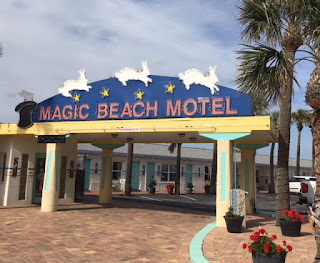Walter Hamady, a pioneer book artist, who taught many of today’s practicing book artists (or their teachers) once said that the book was the Trojan Horse of Art. By that he meant that people who claimed they didn’t like or understand art would still look at an artists’ book and admire the cover, the presentation of the text, and the illustrations, and would look at it much longer than they ever would a painting. I claim that by the end of the twenty-first century the book arts will be the dominant art medium, that museums will be gathering dust while libraries will be the vibrant centers of aesthetic experience.
We felt a bit hidden in plain view at the Florida Antiquarian Book Fair. We were surrounded by what people really came to see: first editions, incunabula, children’s books, and paper ephemera. When people stopped in our booth they were either completely confused by what they were seeing or excited to find what they had often only heard about. Much like tiny homes, which most people have only seen on TV, many of the book fair’s patrons had heard of artists’ books but had never had the opportunity to see or hold them.
Awakening
Walking through Vilano Beach, near St. Augustine, Florida, we began to ponder
the connection between advertising signs and artists’ books. They both combine
structure and words. There is the common love of typography, and they
combination of letterforms with imagery to convey meaning. Before there were
artists’ books, perhaps using the medium of buildings and signs was the way
people who are now drawn to the book arts found ways to express themselves as
artists.















No comments:
Post a Comment